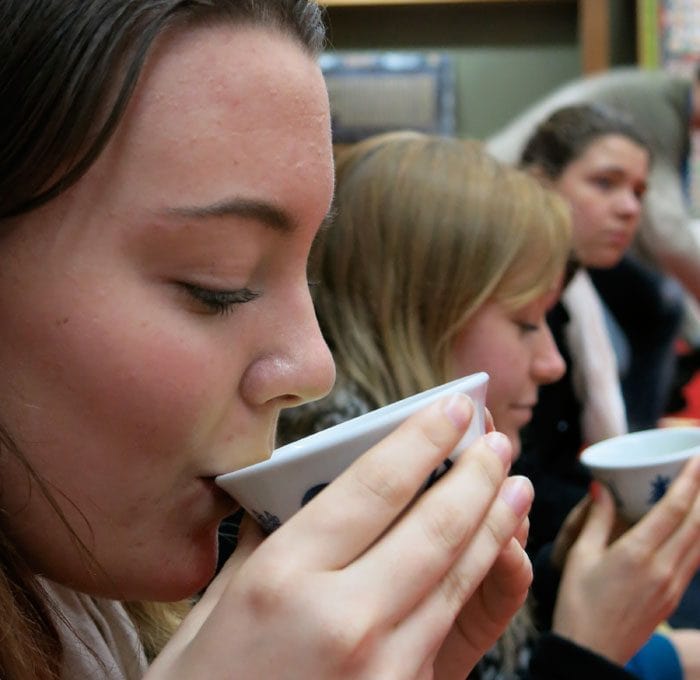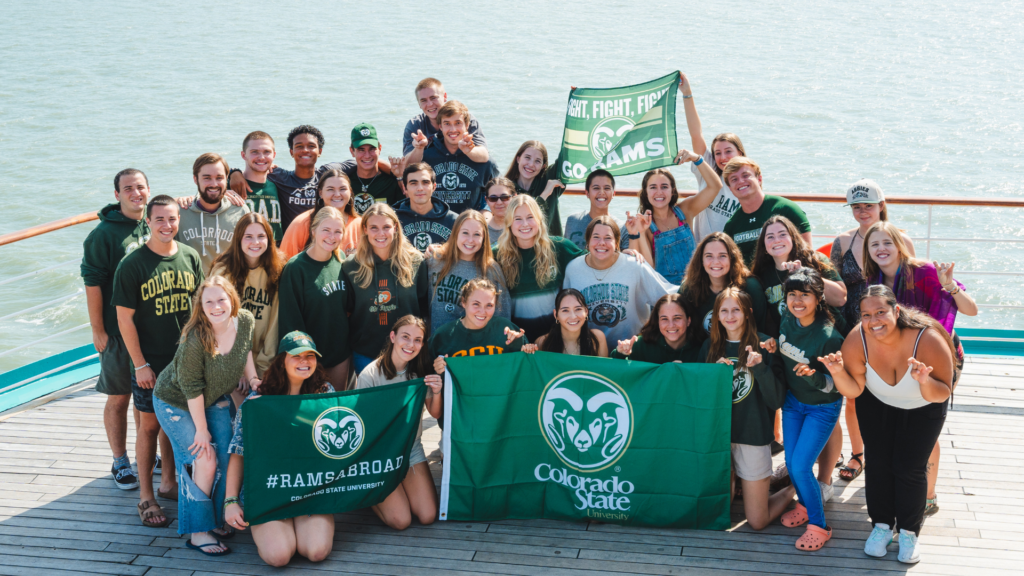
High atop Mt. Koya in the Wakayama Prefecture, worlds away from the neon and hustle of Tokyo, a group of students, staff and faculty didn’t merely learn about Shingon Buddhism, but they lived with working monks and experienced their morning prayers, fire rituals, tea ceremonies, and peaceful lifestyle.

At the beginning of the 9th century, Kobo Daishi Kukai returned from his studies in China and brought with him new teachings of Buddhism called Shingon. In this version of Buddhism, it is believed that by nurturing one’s spiritual side through symbolic gestures, mantras, and mental concentration, all living things have potential for enlightenment. With permission from the Imperial Court, Kukai was able to build a monastic complex atop Mt. Koya. Over the course of hundreds of years, a school for monks was established along with stunningly ornate temples, extensive rock gardens, and sprawling cemeteries.
For many students, this was their first introduction to Shingon Buddhism. For professor Grant Hardy who teaches world religions aboard the MV Explorer however, this is a topic he knows well. “After 20 years of teaching about Buddhism, it’s really nice to see it up close.” By spending time among working monks, and seeing their lives in detail, Hardy believes it will enrich his curriculum by giving him a “broader perspective on how this religion actually works.”
In Buddhism, all sentient life is revered and sacred. From this vantage point, eating anything other than a vegetarian diet would be in conflict with the religion’s core beliefs. While living at the Kumagar-ji Temple, students ate nothing but Shojin Ryori, Buddhist vegetarian cuisine. Mike Jarosz, a vegetarian from British Columbia Institute of Technology, had a hard time finding a meatless meal in Tokyo so the monk’s diet was a delicious highlight for him. Not only was the food unique and flavorful, but it also validated his own life choices. “Although they’re not the same religion as I am, they follow similar beliefs and practices as me which is cool,” he said.

As the sun rose above the mountain the next morning, the group had the opportunity to stroll through the Okunoin Cemetery. This 1,000 year old sacred burial ground is the largest in Japan, home to more than 200,000 gravestones and was named a UNESCO World Heritage site in 2004. With 500 year old Japanese cedar trees towering over the 2km long necropolis, honey-colored morning sun piercing through the fog, and moss covered gravestones facing the walking path, one couldn’t help but feel a sense of calm and wonder.
For Rebecca Schwier, an art student from the University of Hawaii at Manoa, this was the most inspirational portion of the retreat. “Usually America cemeteries are very morbid, but there was such a peace [at Okunoin].” With a camera full of great photos, she “can’t wait to do some sketches” when she gets back to the ship. Through what she described as a cultural awakening, Schwier was humbled by the experience and found a “sense of clarity” from her time spent on Mt. Koya.
Although this was only a two-day field program, the group came back with a new batch of memories and experiences that they will bring to their respective classrooms and carry with them throughout the voyage and beyond. As Schwier said, this was “something you wouldn’t be able to experience anywhere else in the world. It was really incredible.”



